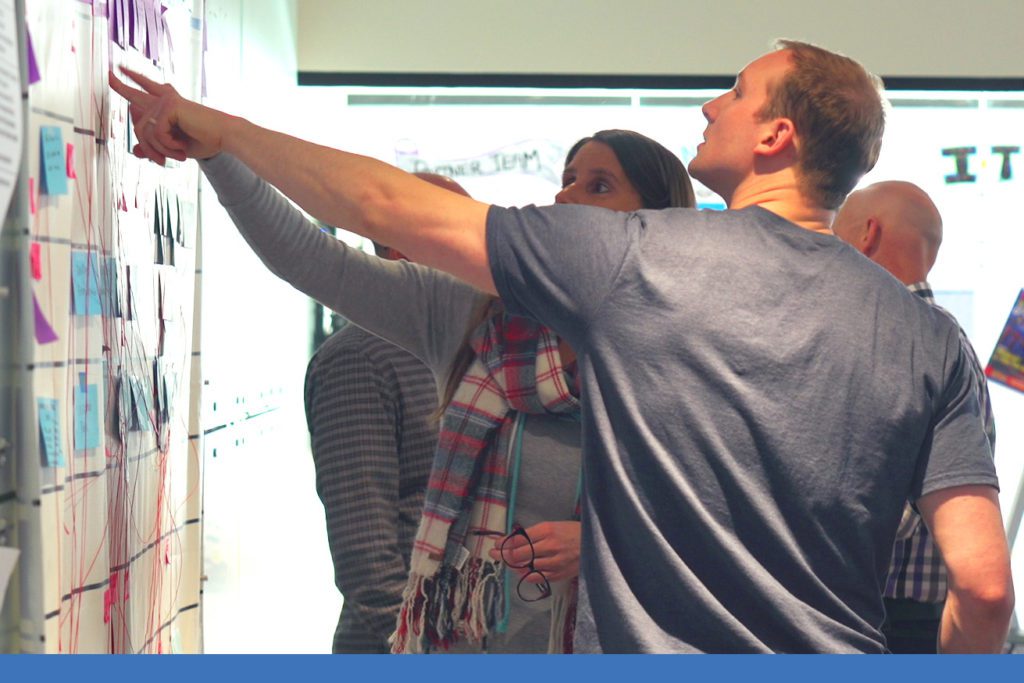
I’m the scrum master for several teams at Scaled Agile. Throughout my time here, we’ve had team members leave the company. We’ve hired new team members. And we’ve reorganized around value, forming and re-forming new teams. During these times of change, we’ve needed ways to keep the teams motivated and working well together.
I’m pretty fortunate as a scrum master in that my team members will tell me what they need—and they’re very vocal. There were certainly some direct conversations where they said, “Hey, we’re losing out on the interpersonal connections with other team members. The dynamic is changing. We feel like things are changing.” I appreciated the team giving me those very direct cues for what to focus on and how to find ways to maintain our team dynamic.
We have to know each other. We have to trust each other. We have to have good communication. It’s like a relationship; it takes a lot of work. It’s not something that just happens in a week. We made it through those times of change. The team sort of stabilized, which is nice to see, and now we’re in a place where we want to try and push a little bit further. So, we observe relentless improvement. We never just sit back and say, “We’re done getting better.” There’s a lot of giving and take and push and pull, but it’s important to make sure that your team members know they’re being heard and listened to. And that we’re all working toward a common objective. Those elements have been really crucial to getting the team’s buy-in and making sure they’re motivated.
Patrick Lencioni talks about vulnerability-based trust as being foundational for a high-performing because it gives team members the ability to ask for help and admit mistakes. For team members to trust each other, they need to be seen and heard. As a facilitator, I can create opportunities for that to happen. I lead by example to show a genuine interest in the lives of our team members and try to understand what motivates them. When preparing for a team meeting, I like to reserve 5 to 10 minutes in the beginning when there’s no pressure to make progress on the purpose of the meeting. Rather, it’s time reserved for maintaining our team dynamic. I’m not into American football, but I’ll ask my teammate questions about the team in her Zoom background. Recently, we heard a funny story from a teammate telling us about his “I turned 50” trophy on the shelf behind him. These moments help us see and hear each other, which in turn strengthens our trust and ability to work together as a team.
There are lots of things we can do to promote a sense of pride in our teams. During a recent reorganization, we allowed team members to choose their team names. One of our graphic designers was so inspired by the new team name, he created a badge that we include on any documents that our team uses.
Friendly competition is great to bring a team together (games are also a sneaky way to check your team’s understanding of a topic). We’ve played trivia, Family Feud, Jeopardy, Kahoot games, and even had an Olympic-themed PI Planning where teams could compete to win points. We gamify our hackathons and have competed in cultural diversity simulations. Each of these activities is designed to give the team something to rally around other than their day-to-day work and reminds them that they can accomplish more when they work together.
About Sam Ervin

Sam is a certified SAFe® 5.0 Program Consultant (SPC) and serves as the scrum master for several teams at Scaled Agile. His recent career highlights include entertaining the crowd as the co-host of the 2019 and 2020 Global SAFe® Summits. A native of Columbia, South Carolina, Sam lives in Denver, CO, where he enjoys CrossFit and Olympic weightlifting.
Share:
Back to: All Blog Posts
Next: Connect Your Learning Networks to SAFe